The Opel Vivaro that was sighted in Subang Jaya last month has been seen again, this time at Vision Motorsports’ facility in Kampung Sungai Kayu Ara, Petaling Jaya. The vehicle is likely the same unit seen in the previous post, and is wearing the same trade plates as before.
The photos reveal that the vehicle isn’t just a regular commercial version of the third-gen Vivaro – which is also badged as a Vauxhall in selected markets and is related to the Citroen Jumpy, Peugeot Expert and Toyota ProAce – but the electrified form, as it’s making use of Vision’s DC fast charger.
The Vivaro-e, which is powered by a 136 PS (134 hp) and 260 Nm electric motor, is available in two battery capacity configurations, these being a 50 kWh with up to 200 km of range and a 75 kWh unit with up to 300 km of range, based on a WLTP cycle.
The Facebook post highlighting the Vivaro-e cryptically mentions that “a new brand is coming in,” highlighting the possibility of Opel’s return to the local market. As mentioned in our earlier story, Stellantis has already secured full ownership of Naza Automotive Manufacturing (NAM) and its manufacturing plant in Gurun, Kedah, so the Vivaro could well be on the cards for local assembly here.
The particular Vivaro-e example isn’t a panel van but rather a crew van variant, as it features rear side windows. There’s also a passenger version of the electric van, the Zafira-e Life, with the same powertrain and battery capacities, albeit with slightly higher travel range – could we also be looking at it coming our way, if the brand is indeed making its way back to Malaysia?
Looking to sell your car? Sell it with Carro.

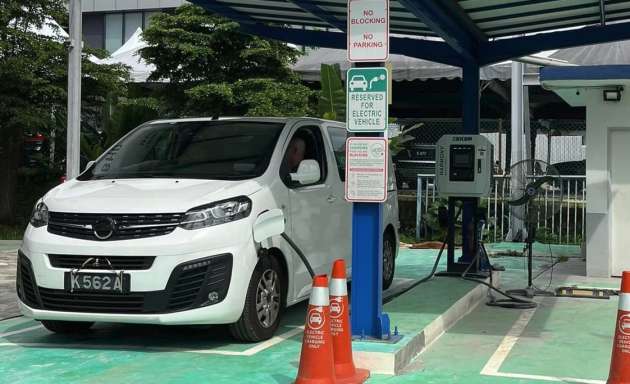


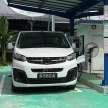

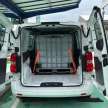
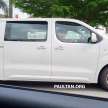
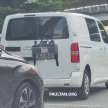

This brings back memories from a long time ago when we used to see this brand on the road back in the 90s
something GM should have done long ago, instead of giving us a half baked chevrolet which were all rebadged daewoos
Although Opel ‘left’ Malaysia some two decades ago, they actually have one of the longest track records in our market, especially when viewed as a subset of General Motors. It’s virtually impossible to evaluate Opel as a separate entity anyway, owing to their nearly century-long integration with right-hand drive ‘twin-sister’ Vauxhall, ‘cousin-sister’ Holden, and various ‘sister-in-laws’ like Chevrolet, Buick, Isuzu, Daewoo, etc..
Opel’s story in Malaysia can be traced back to colonial times, but to keep things simple, I’ll skip to late-1950s newly-independent Malaya. Back then, Opel’s local distributor was a company called Singapore Motors. There were no car plants in our country back then, so everything was imported CBU. And one of the models imported back then was the Rekord P1, manufactured in Germany but stylized to resemble American cars from that era (not unlike Ford UK’s Anglia 105E, i.e. ‘that Harry Potter car’).
Then in the mid-60s, another Singapore-based company called Capital Motors Malaysia took over the Opel franchise here. Their parent company invested around RM 5 million (not adjusted for inflation) to build an Opel assembly plant at the Tampoi industrial estate in Johor Bahru. The new plant, called Capital Motor Assembly (CMA) came online in May 1968, assembling the Rekord C and Kadett B with KD kits from Germany.
Later, CMA would locally assemble other Opel models from Europe like the Ascona and Manta (Ford Capri rival), as well as the Australian-sourced Holden Kingswood, Statesman and Commodore. The CMA plant also contract-assembled Datsun cars for Tan Chong Motor for just about a year or so, before swapping contract assembly for Kah Motor’s Honda in 1969. The same plant also made the Bedford Harimau, specially designed by GM for Malaysia. Later in 1971, GM bought out the CMA plant altogether, and renamed it to General Motors Malaysia.
Unfortunately by the 1970s, Western cars were rapidly losing ground to Japanese cars in our market (and globally). Like Ford and Chrysler, GM initially worked with, or bought stakes in some smaller Japanese car companies to build more globally marketable cars. The Isuzu Gemini was one of many ‘hāfus’ born during that era.
The Gemini was locally assembled and rebadged as an Opel for our market. I believe the Gemini is the most popular model Opel ever sold in Malaysia, being prominently used as taxis in the ’70s with the old ‘black-and-yellow’ paint scheme. Indeed, Opel’s market share in Malaysia peaked in the ’70s, at between 3 and 5 percent. In 1976, Opel was the sixth best-selling car brand in Malaysia, ahead of all Western rivals, save for Ford.
All through the 1970s, the CMA plant was assembling GM models alongside Hondas. It eventually came to a point where Honda sales outpaced available contract capacity. This, among other factors led to Oriental Group (parent of Kah Motor) buying out the GM Malaysia plant in 1980, and renaming it to Oriental Assemblers (OASB).
Local assembly of Opel-badged models ended in 1982 or so. Then Proton came into the picture in 1985, and sales of virtually every mass-market car brand shrunk between 60 and 95 percent within 3 short years.
Opel made one last comeback here in the mid-1990s, through local distributor Europel. The most notable models from the Europel period were the Opel Zafira, one of the earliest car-like MPVs in our market, and the Opel Calais, a unique rebadged Holden Commodore VR/VS. Europel’s slogan at the time (1995) was ‘German Engineering for Malaysian Roads’… right.
Then in 2003, GM decided to relaunch the Chevrolet brand in our market with DRB-HICOM, under the Hicomobil joint-venture. GM discontinued the Opel brand here, and Europel was left out of the picture. Unlike Europel though, Hicomobil focused on more marketable models from GM’s Korean (formerly Daewoo) stable. Although, Hicomobil did relaunch the Zafira as the Chevrolet Nabira (CBU from Thailand), and a small number of Chevrolet Lumina (rebadged Holden Commodore VY/VZ) were also brought in.
Later in 2010, Naza Quest would take over the Chevy franchise from Hicomobil, and as of today, GM’s presence is virtually non-existent in our market. GM has parted ways with long-time partner Isuzu, and have (thus far) not officially announced plans to export their Indonesian-built Wuling models to our market either…
Even though Opel has been absent from our market for some two decades or so, they are still very relevant elsewhere, most notably in Europe. The brand is still present in Singapore too; locals in Johor may spot the occasional Singapore-registered Opel. It’s also interesting to note that Proton benchmarked their Prevé CFE against the turbocharged Vauxhall/Opel Astra H, while the rear-end of the 2016 Perdana is also very much inspired by the 2013 Vauxhall/Opel Insignia.
It remains to be seen whether Opel will relaunch in Malaysia sometime soon, perhaps as an EV-only or even performance-focused brand, as a niche complement to better-known Peugeot here. Or maybe Opel just wants to use the now Stellantis-owned plant in Kedah as a low-cost production hub for some export markets, leveraging on economies of scale with platform and parts sharing with Peugeot. Just as well, the above Vivaro, along with the Mokka, Citroen C4, DS3 Crossback and DS9, and Peugeot 508 from local spyshots could all be internal test mules of sorts.
We can only speculate, and only time will tell, what Opel is hiding up their proverbial sleeves. If you’ve read from beginning till end, thank you for your time !
You must be an Opel fan. It’s been a long time that I’ve seen a comment that has real substance at this PT portal.